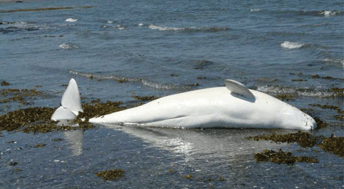PBDEs and PCBs in the liver of the St Lawrence Estuary beluga (Delphinapterus leucas): a comparison of levels and temporal trends with the blubber†
Abstract
Due to their lipophilic properties, persistent organic pollutants (POPs) are commonly assessed using the blubber of marine mammals. However, these chemicals are also accumulating in other tissues including the liver. Some pollutants, namely perfluorinated alkyl acids, are found predominately in the liver and blood of marine mammals, and thus monitored in those tissues. This raises the question whether any tissue would represent an identical trend of POPs in the SLE beluga. The current study reports the first temporal trends of PBDEs and PCBs in the liver of 65 SLE belugas. Neither ∑7PBDEs nor major individual PBDE-homolog group concentrations showed significant trends between 1993 and 2007. Also, ∑32PCBs did not change over years, although, tetra-, penta- and hepta-PCB decreased by 7.1, 6.8 and 8.5%, respectively, in males, whereas tetra-, penta- and octa-PCBs declined by 11, 12 and 12.9%, respectively, in females. In order to compare the distribution of POPs between liver and blubber, a


 Please wait while we load your content...
Please wait while we load your content...